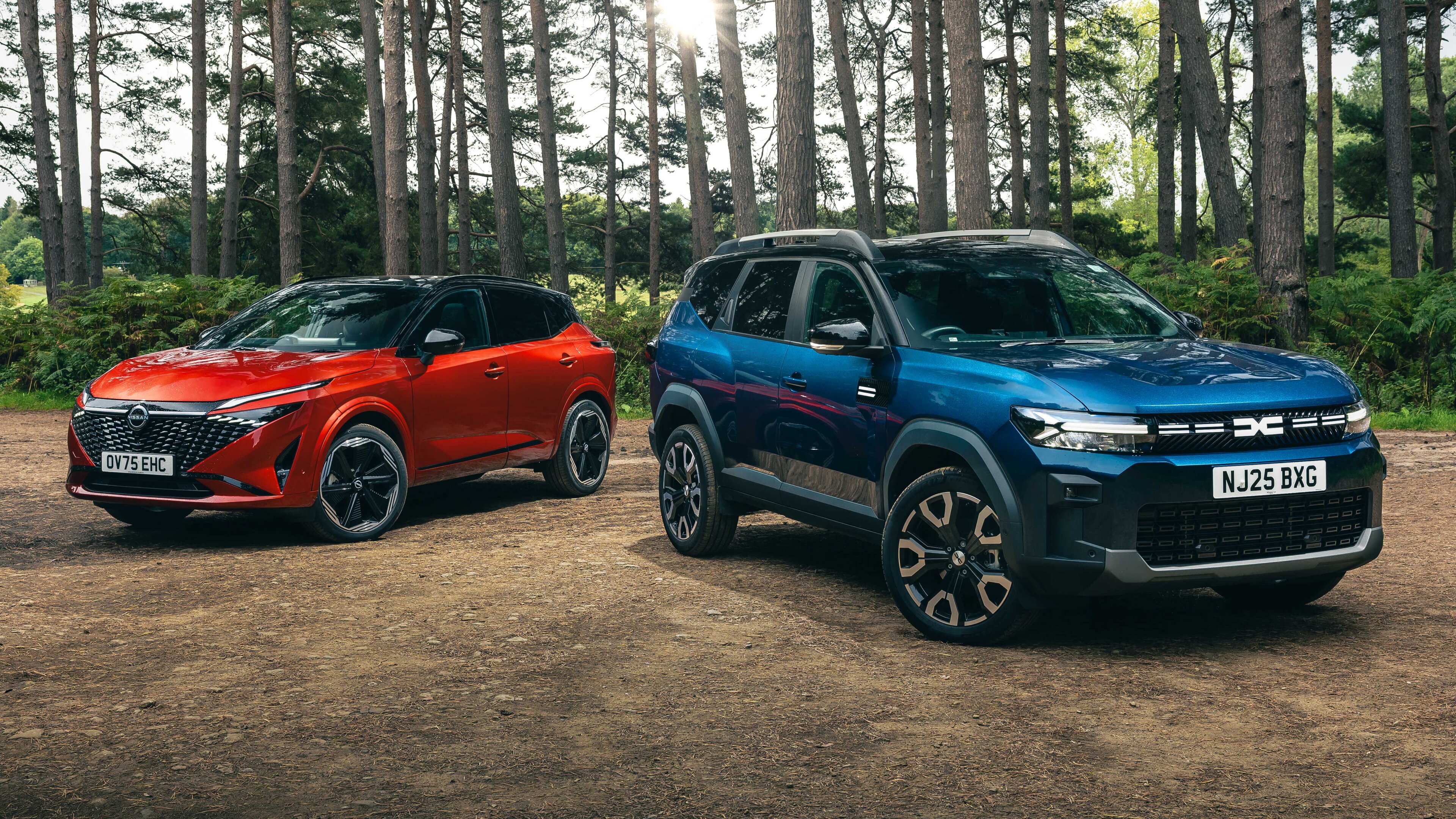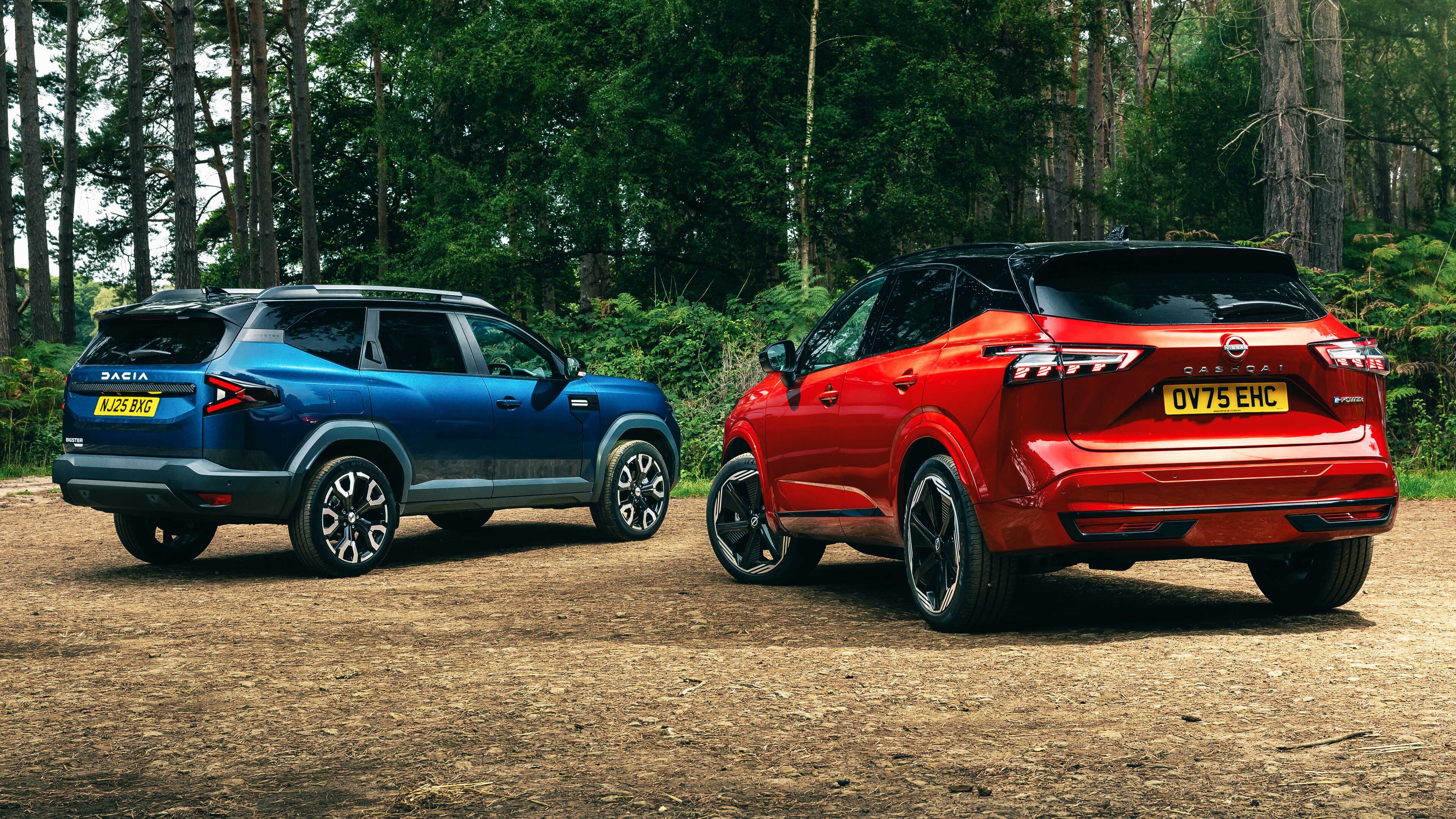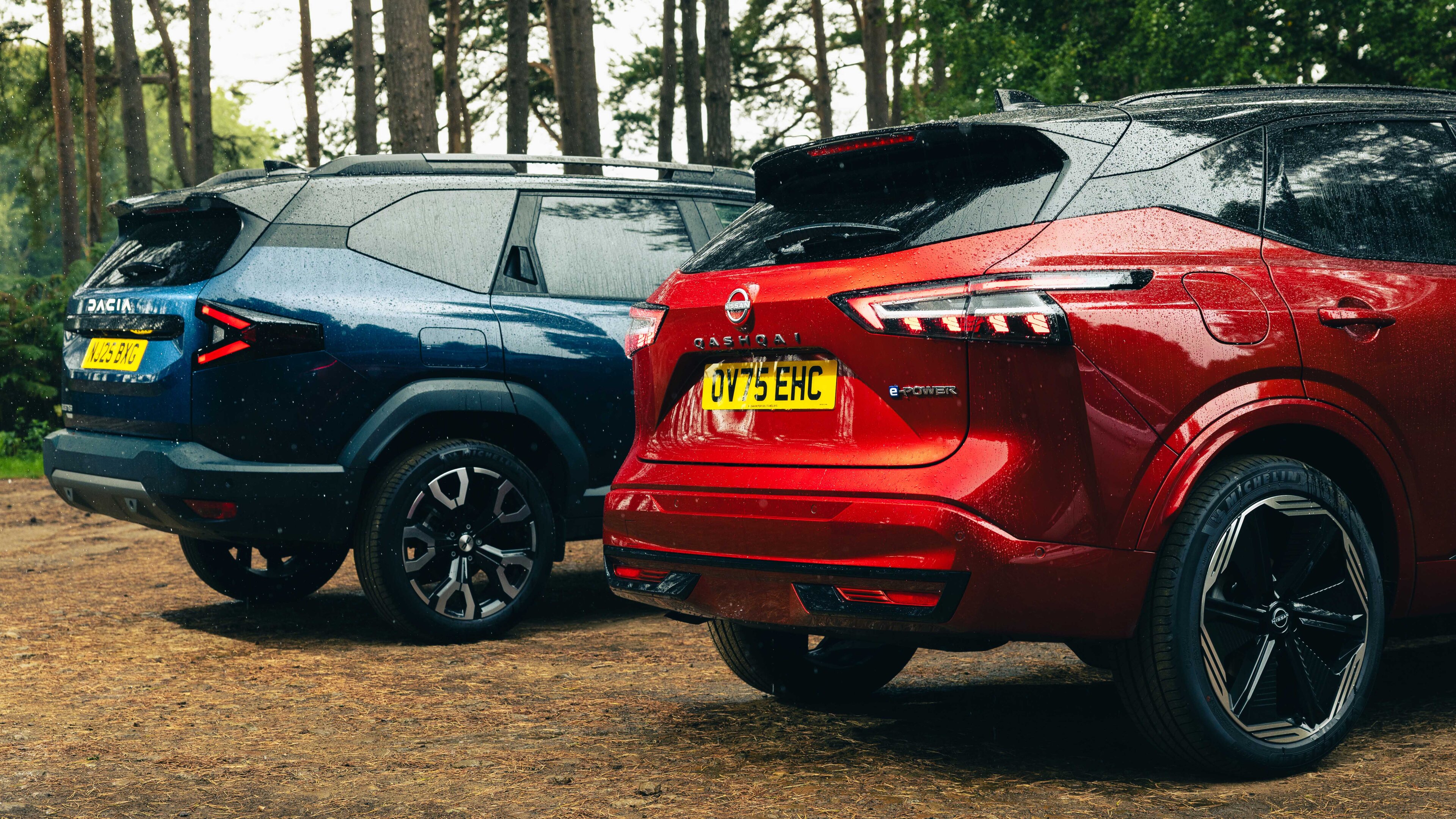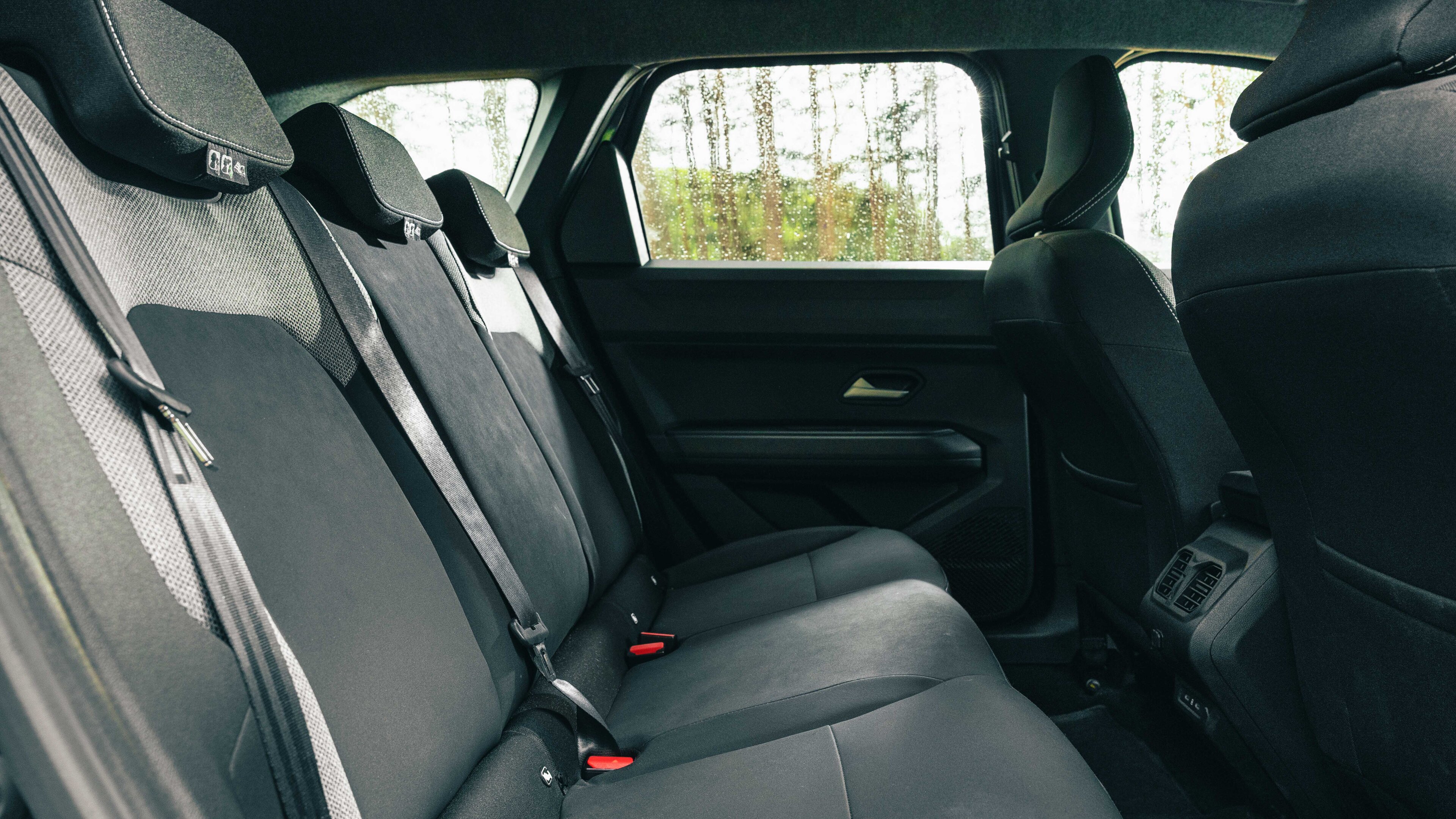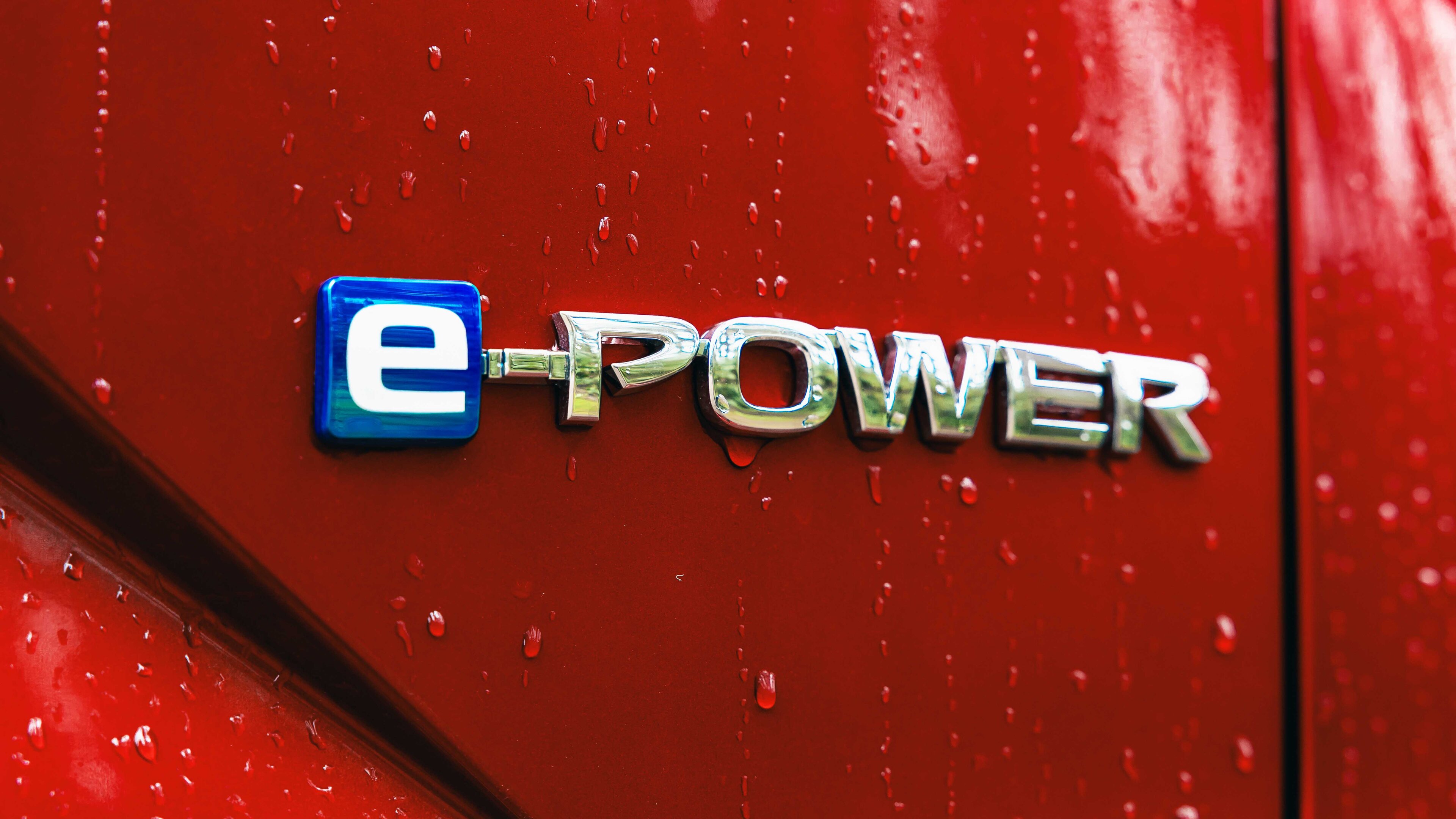
Dacia Bigster vs Nissan Qashqai: battle of the hybrid crossovers
The Qashqai was the original crossover... these days it’s been leapfrogged in the pecking order. Can a Dacia beat the OG?
If space equals luxury, the new Dacia Bigster should really be up against the Rolls-Royce Cullinan. The same is often said for time, and Romania’s latest export would give you plenty of that back too, because while its 0–62mph sprint only just sneaks under the 10 second mark, the Bigster’s complex 153bhp hybrid powertrain sips away at fuel to allow for a range of over 650 miles on a single tank. You lose more time in fuel stations than you do accelerating...
Nissan’s engineers also claim that ‘no compromise’ was made in the development of its new, third generation e-Power hybrid system seen here in the Qashqai. We’re told that the whole platform was engineered with this setup in mind, so where rivals stick a battery under the boot floor (eating into bootspace) or under the rear seats (limiting the size of the fuel tank), the Qashqai’s is under its front seats to allow for a 55 litre tank and a theoretical range of over 740 miles. In real world driving it’s probably more like 630 miles, so slightly less rangey than the Bigster but still mighty impressive. Still need that diesel?
Oh, and the Qashqai’s bootspace is advertised as 455 litres, which means it’s more roomy than most hatchbacks, but ultimately smaller than the Cullinan. The Dacia gets far more luggage space than the Roller. We can hear them quaking in their leather soled boots down in Goodwood.
Photography: Jonny Fleetwood
The Qashqai was the car that kickstarted the crossover craze on these shores though, and it’s still designed, engineered and built in Britain. However, while it remains a massive seller (it was third on the list of new cars shifted in the UK in 2024), we would argue that it has been overtaken by a number of copycat rivals. Will that be the case with the Bigster, too?
Well, this new e-Power setup is here to try and get Nissan back on its slightly elevated perch. It uses a bespoke new 1.5-litre three cylinder that never actually drives the wheels. Instead, the engine acts as a generator to send power to the 2kWh battery, while the electric motor from a Leaf powers the front wheels with 202bhp.
There’s no gearbox because the engine just runs at the optimum revs to generate electricity, but a new, larger turbocharger means it can run around 600rpm lower on average than the old e-Power engine did. Combined with a stiffer block for less vibration, this new powertrain is supposedly 5.6 decibels quieter than the previous setup.
That’s noticeable for the majority of the time on the move. The thrum mostly fades into the background and is covered by a slight bit of road and wind noise. It makes the Qashqai a surprisingly impressive motorway cruiser in hybrid form, although there is still the odd occasion where you’ll be pootling about town and it’ll desperately need to get some juice into the battery.
At that point you can’t ignore the engine, and because the revs don’t rise and fall at all, you’re willing it to finish its work and pipe down. Luckily it does so rather quickly and you can settle back into the calm. There’s even a brake mode or a more aggressive one-pedal drive mode to further try and convince you that you’re in an EV. There are also Eco and Sport modes, with the latter unlocking the full power and torque reserves which occasionally overwhelm the grip levels of the driven wheels.
Top Gear
Newsletter
Thank you for subscribing to our newsletter. Look out for your regular round-up of news, reviews and offers in your inbox.
Get all the latest news, reviews and exclusives, direct to your inbox.
There’s nothing so fancy as a Sport mode in the Bigster. The basics are a 1.8-litre four cylinder petrol engine and two electric motors. One of those e-motors can drive the wheels with around 50bhp at low speeds, while the other is used as a starter/generator. The Bigster always starts in electric mode, and there are two gears for the larger e-motor plus a further four for the combustion engine.
Despite having a teeny 1.4kWh battery, the Dacia will run with its engine off for a surprising amount of time, particularly if you’re at low speeds in town and have been making the most of regen in its brake mode. There’s clearly less sound deadening than in the Nissan and that four pot engine can be quite gruff, but at least its revs roughly match your speed and the handover between petrol and electric power is generally pretty smooth. It does hang onto gears for slightly too long under hard acceleration, but this is a hybrid crossover so you’re unlikely to be doing much of that. It doesn’t settle into a cruise as easily as the Nissan either, with more wind noise from its bluff front end.
We wouldn’t want to change those looks, though, because the stocky styling suits the Bigster’s character to a tee. It’s rough ’n’ tumble and ready for the outdoors, even if this one only drives its front wheels. You’d still get a decent way up a rough track off-road, and its unpainted bumpers and arches are simply made from recycled plastics. In profile it actually looks like a raised estate car rather than a tall hatch, with a long boot and a neat little roof spoiler.
Nissan took a totally different approach with the designing of its third gen Qashqai, and its sharp styling certainly stands out in this mid spec N-Design trim with body coloured bumpers and 20in diamond cut wheels. That two-tone Fuji Sunset Red paint with a black roof is the standard shade too. You’ll pay £745 extra for white or grey.
Strange, but we’re all for it. A couple of updates have been included alongside the introduction of this new powertrain, with redesigned wing mirrors, a one piece undertray and little front tyre deflectors all improving aero.
Nissan had the headstart in the crossover category after essentially creating it back in 2006
The Qashqai corners and steers well enough too, although there’s not a huge amount of feedback through the wheel and the brake pedal is soft if you’re not in its one pedal mode. Then again, many of the same complaints can be lodged against the Bigster, and even though it’s wearing slightly smaller 19in wheels the ride is sometimes a little bit knobbly over rough surfaces. It doesn’t roll as much as you might expect through corners, however.
Perhaps more important is that both of these family crossovers are supremely easy to park. Like the mini-me Duster, the Bigster does have quite a small glasshouse and so gets a few blind spots, but even the entry level Expression trim includes high quality cameras all around the car for different angles. The Qashqai gets even more cameras and a 3D render of the car up on the 12.3in infotainment screen from its second N-Connecta trim upwards. Said infotainment screen now uses the Google system too, which means there’s a massive improvement over Nissans of old.
OK, some of the in-house graphics and fonts still look a little dated, but navigation is handled by Google Maps and you get access to a half competent voice assistant and plenty of different apps.
No doubt you’ll have noticed the proper climate control panel, which is one of the few that remains with all of its features separate from the screen and displays the temperature at all times. How very sensible. Oh, and there are chunky buttons on the steering wheel that are easy to use, with two presses to turn off the unwanted beeps and bongs required by modern safety tech.
The Dacia has a similarly simple way of getting rid of the active safety systems. Just set up your custom settings in the central screen, then every time you start the car it’s two presses of a small button down on the right hand side of the wheel.
The 10.1in central infotainment screen in the Bigster operates with a little more lag than the one in the Nissan, but its design and graphics are simple and modern. The same can be said for the 10in digital dial display. The seats are fairly plain fabric jobs, but there’s a massive amount of space in both the front and rear. Legroom in the back is plentiful, although we’d tick the box for the £850 panoramic sunroof to bring a bit more light.
Of course, there are some cheaper plastics in the Dacia, but they’re mostly kept away from the main touchpoints or are at least moulded into an interesting shape. In this trim the Qashqai is actually full of Alcantara, while the seat centres are synthetic leather and the steering wheel is 100 per cent bovine. A smidge of ambient lighting tops off what is actually a rather pleasant interior, but there are two issues.
Number one is the fact that there clearly has been a compromise with the placement of the battery. As the driver you sit high, which isn’t a deal breaker, but when combined with a rearview mirror that doesn’t angle upwards it’s difficult to see out of the rear window at a glance, especially if you’re over 6ft tall and sit up straight.
However, the main issue is the price. This new e-Power powertrain isn’t any more expensive than its previous iteration, but that was already far too expensive. You’ll pay roughly £4,000 more than the entry level 1.3-litre mild hybrid, which means e-Power prices kick off at £34,860 and run all the way up to £43,210 for the top spec Tekna+ trim. As tested this one is £39,680, or £445 per month with a £5,000 deposit on a four year deal.
To put that into context, the Bigster starts at £28,190 with this Hybrid 155 powertrain, and it still tops out at under £30,000 for the funky Extreme trim with a green interior and glitzy rose gold exterior details. The car you see here is mid level Journey trim with £650 metallic paint, meaning it’s almost £10k cheaper than the Nissan. Or just £330 per month with a smaller deposit. A lot of car for the cash.
On our test, the Dacia also outperformed its claimed economy, with the trip computer registering a seriously impressive 69mpg after a town, motorway and country road run. The Qashqai saw 53mpg in similar conditions.
Nissan had the headstart in the crossover category after essentially creating it back in 2006, but as happened with the Leaf’s lead in the EV stakes, the Qashqai has been eclipsed by a number of rivals. Whisper it around these halls, but it is actually a very competent car these days, it’s just a shame that other brands seem to be able to make similar cars with much more character, for much less cash. That’s exactly what Dacia has done with the Bigster, and that kind of value can’t be ignored.








